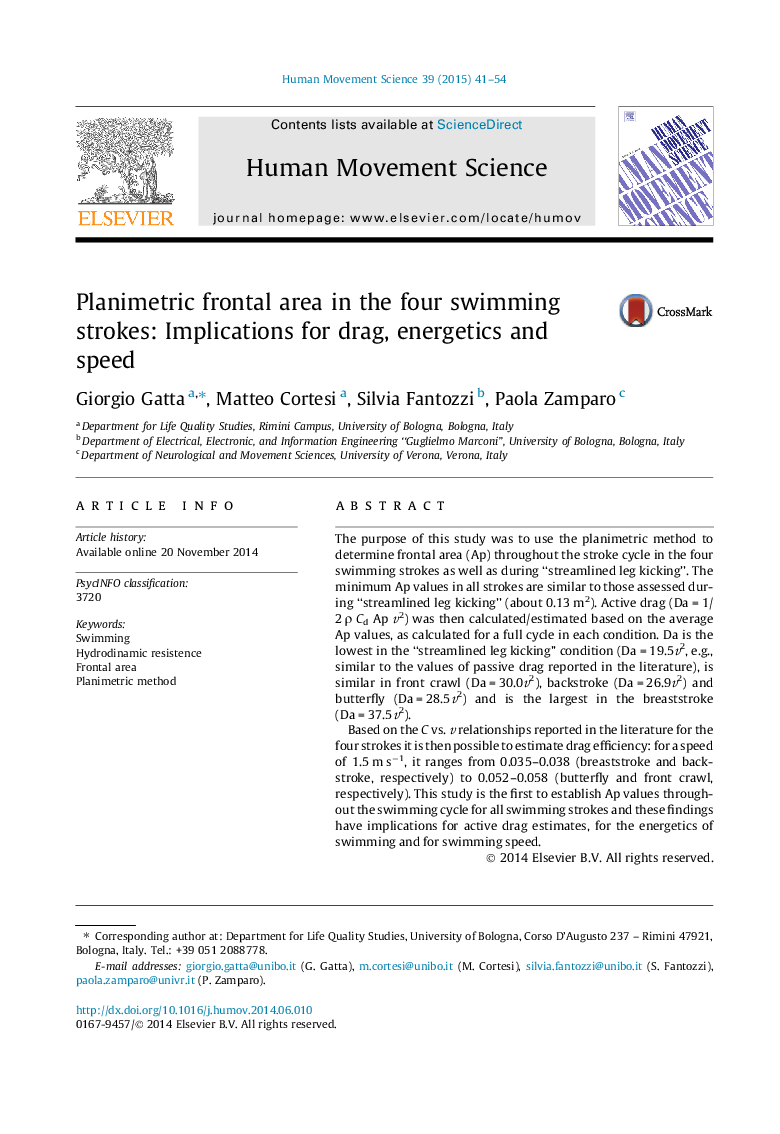| کد مقاله | کد نشریه | سال انتشار | مقاله انگلیسی | نسخه تمام متن |
|---|---|---|---|---|
| 928287 | 1474226 | 2015 | 14 صفحه PDF | دانلود رایگان |
• We used a planimetric method to estimate the average Ap values measured during a complete stroke cycle.
• The measurement of Ap is an important way to analyze the complex problem of the drag.
• We can estimate the drag value in all four swimming strokes.
• We find that the front crawl and butterfly are the swimming strokes with better “drag efficiency”.
The purpose of this study was to use the planimetric method to determine frontal area (Ap) throughout the stroke cycle in the four swimming strokes as well as during “streamlined leg kicking”. The minimum Ap values in all strokes are similar to those assessed during “streamlined leg kicking” (about 0.13 m2). Active drag (Da = 1/2 ρ Cd Ap v2) was then calculated/estimated based on the average Ap values, as calculated for a full cycle in each condition. Da is the lowest in the “streamlined leg kicking” condition (Da = 19.5v2, e.g., similar to the values of passive drag reported in the literature), is similar in front crawl (Da = 30.0v2), backstroke (Da = 26.9v2) and butterfly (Da = 28.5v2) and is the largest in the breaststroke (Da = 37.5v2).Based on the C vs. v relationships reported in the literature for the four strokes it is then possible to estimate drag efficiency: for a speed of 1.5 m s−1, it ranges from 0.035–0.038 (breaststroke and backstroke, respectively) to 0.052–0.058 (butterfly and front crawl, respectively). This study is the first to establish Ap values throughout the swimming cycle for all swimming strokes and these findings have implications for active drag estimates, for the energetics of swimming and for swimming speed.
Journal: Human Movement Science - Volume 39, February 2015, Pages 41–54
